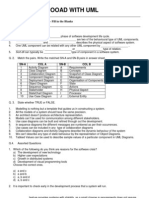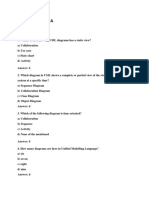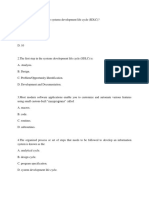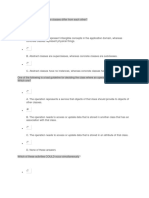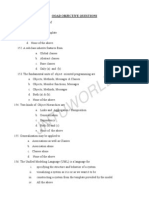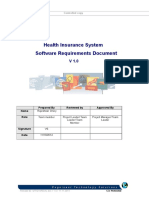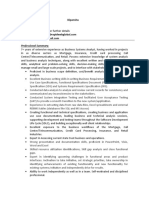0% found this document useful (0 votes)
1K views10 pagesOOAD/UML Self-Test Guide
The Account class should implement the xfer() method.
17. Which of the following are valid UML cardinalities? [2 answers]
[_] [a] 1..*
[_] [b] 0..1
[_] [c] 2..5
[_] [d] A..Z
18. Which of the following are valid UML associations? [2 answers]
[_] [a] uses
[_] [b] includes
[_] [c] extends
[_] [d] implements
19. Which of the following are valid UML diagrams? [2 answers]
[_] [a] State diagram
Uploaded by
vipul_garadCopyright
© Attribution Non-Commercial (BY-NC)
We take content rights seriously. If you suspect this is your content, claim it here.
Available Formats
Download as PDF, TXT or read online on Scribd
0% found this document useful (0 votes)
1K views10 pagesOOAD/UML Self-Test Guide
The Account class should implement the xfer() method.
17. Which of the following are valid UML cardinalities? [2 answers]
[_] [a] 1..*
[_] [b] 0..1
[_] [c] 2..5
[_] [d] A..Z
18. Which of the following are valid UML associations? [2 answers]
[_] [a] uses
[_] [b] includes
[_] [c] extends
[_] [d] implements
19. Which of the following are valid UML diagrams? [2 answers]
[_] [a] State diagram
Uploaded by
vipul_garadCopyright
© Attribution Non-Commercial (BY-NC)
We take content rights seriously. If you suspect this is your content, claim it here.
Available Formats
Download as PDF, TXT or read online on Scribd
/ 10







